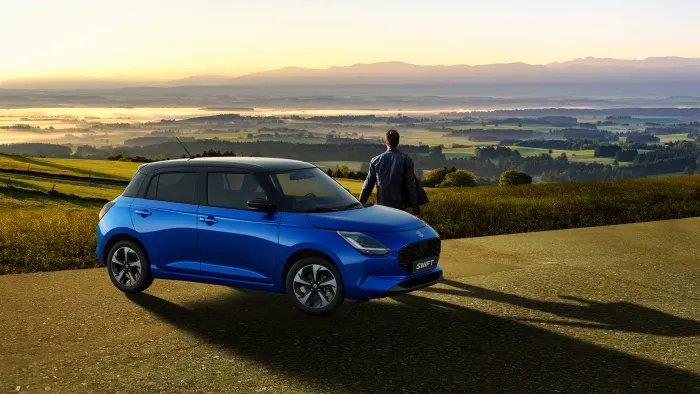Hands on with the 2025 Suzuki Swift Hybrid - remarkably economic forbidden fruit

Back in the mid-1980s, Suzuki and Chevrolet teamed up to sell the Chevy Sprint, a rebadged Suzuki Swift that relied on GM to boost sales. Over time, the Sprint evolved into the Geo Metro, which was still based on a Suzuki Swift. We did occasionally spot some real Suzuki Swifts in the United States, but they were a rare sight.
By early 2013, Suzuki had stopped selling cars and trucks in the United States. I personally felt that was a shame, but they just couldn’t connect with buyers or compete in this market. Up until that point, I had driven every type of Suzuki automobile sold in the United States and even owned a few. They were all simple, well-built, and did their job well.
Suzuki has continued on and is still using the Swift name in its newest batch of ultra-efficient hatchbacks. This is what brings me to the 2025 Suzuki Swift Hybrid, a car that reminds me what the original Swift was: simple, honest, efficient, and slightly fun.
It is a (very) mild hybrid
The specifications for the 2025 Suzuki Swift Hybrid would have most American buyers shout and clutch their pearls as it produces 81 horsepower and 83 lb-ft of torque. Unacceptable for U.S. buyers, but weighing less than 2,100 lbs gives it enough power to merge and commute, even on our roads.
That power comes from a 1.2-liter, three-cylinder engine paired with an electric motor that works as the starter and assists acceleration from a standstill. Unlike many hybrid systems out there, which use 40-400 volt architecture, the Suzuki Swift Hybrid uses a 12-volt system. It works well and is rather lightweight.
A five-speed manual transmission is available, and it is considered the more efficient option. That’s old-school thinking, indeed. Unfortunately, the model I experienced had a continuously variable transmission (CVT), which was stressed.
Driving the 2025 Suzuki Swift Hybrid - it’s slow
I won’t make excuses for its slow speed and 0 to 60 mph estimate of around 14 seconds with the manual transmission. I’m fairly sure the CVT is closer to 16 seconds, making it one of the slowest cars I’ve driven in a decade.
Off the line and powering up to speed, it’s not that bad, but it makes a hell of a racket. Remember, CVTs push the revs pretty high, keeping them there until the vehicle is at the desired pace. That means a lot of high RPM buzz until you get to freeway speed, and more often than not, you need to keep the pedal to the floor to keep up with the flow of U.S. traffic.
Handling was a pleasant surprise, as was the grip of those tiny tires on 15- or 16-inch wheels. There was some body lean, but it was no worse than older economy cars I’ve experienced. The brakes were very good, and the steering feel was reported to be better than expected. I agree.
Other than the slow pace, the road noise, combined with the clatter of the CVT-forced revs, was a bit much. I suspect the manual is not only quieter but also a better drive overall.
Simplicity and utility are the name of the game
The interior is as basic as you can get, but there were some nice touches. For one thing, I liked the front seats, which accommodated my large frame without any issue. I would call them comfortable, at least up front. Rear seating comfort is less impressive, mainly due to the minimal head and legroom, but an average-sized adult would be fairly comfortable back there.
I liked the look of the dashboard, which gives you multiple colors mixed with simple plastics. It feels a bit cheap but looks good. The 9-inch touchscreen infotainment system is a bit dated, but the look and location are excellent, as are the switches and buttons for the environmental controls.
Being that it's a hatchback, it has real utility. Behind the back seat, you get a miserly 8.6 cubic feet of cargo space that's good enough for basic groceries. Fold the seats down, though, and you get a decent ~21 cu-ft of cargo space. That’s better than a two-door Mini Cooper but less than a four-door.
Final thoughts
I know some consumers would be interested in owning such a tiny, simple vehicle, especially given its affordable pricing of about $25,000 for the base model.
That’s on par with the Toyota Corolla Hybrid, a much more pleasant vehicle for the U.S., but the Suzuki is still more efficient. Honestly, I was hoping for more excitement, like the faster, sportier Suzuki Swifts I’ve experienced in the past. Still, this is a solid runabout, and it’s kind of cute to look at, too.
Related News


